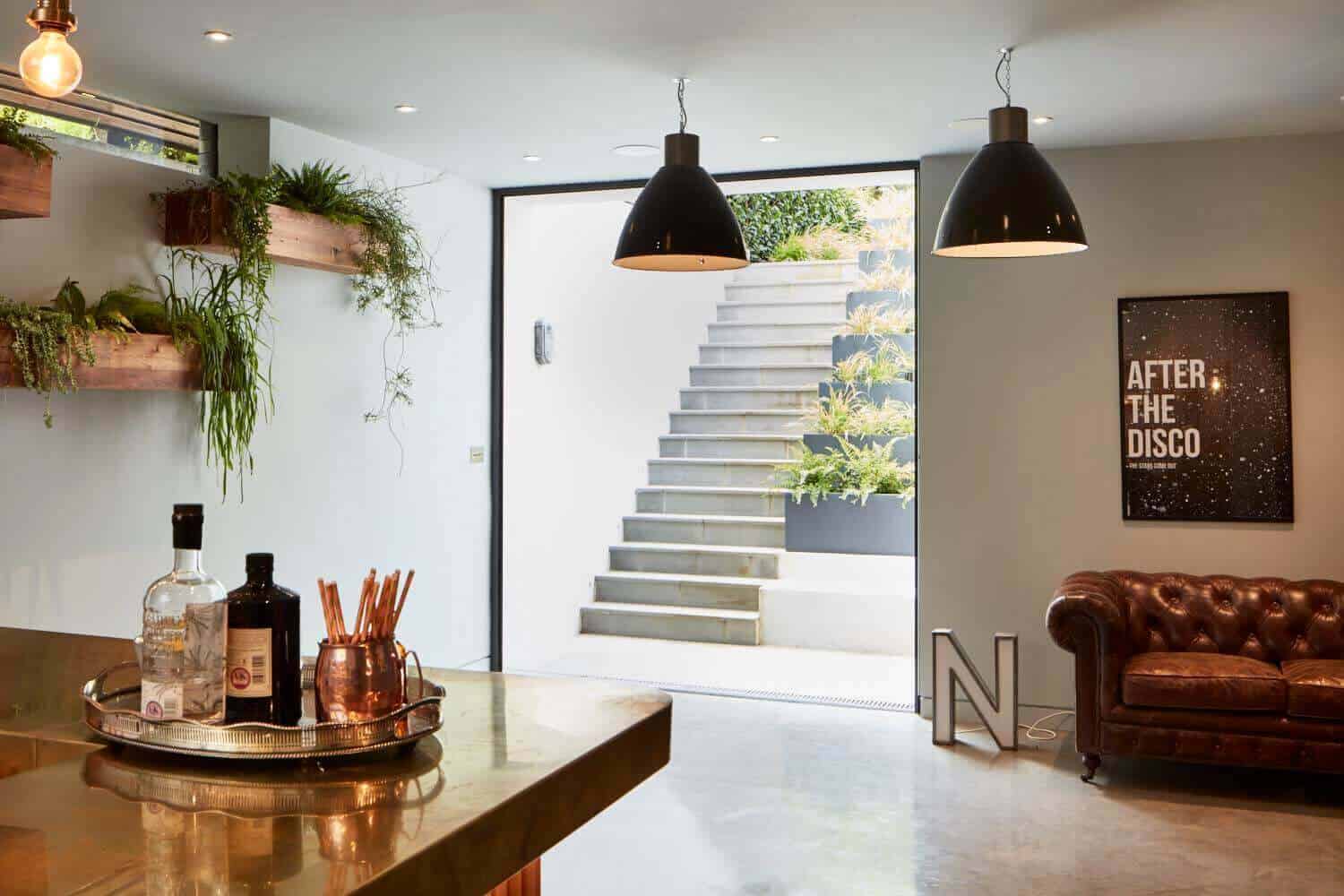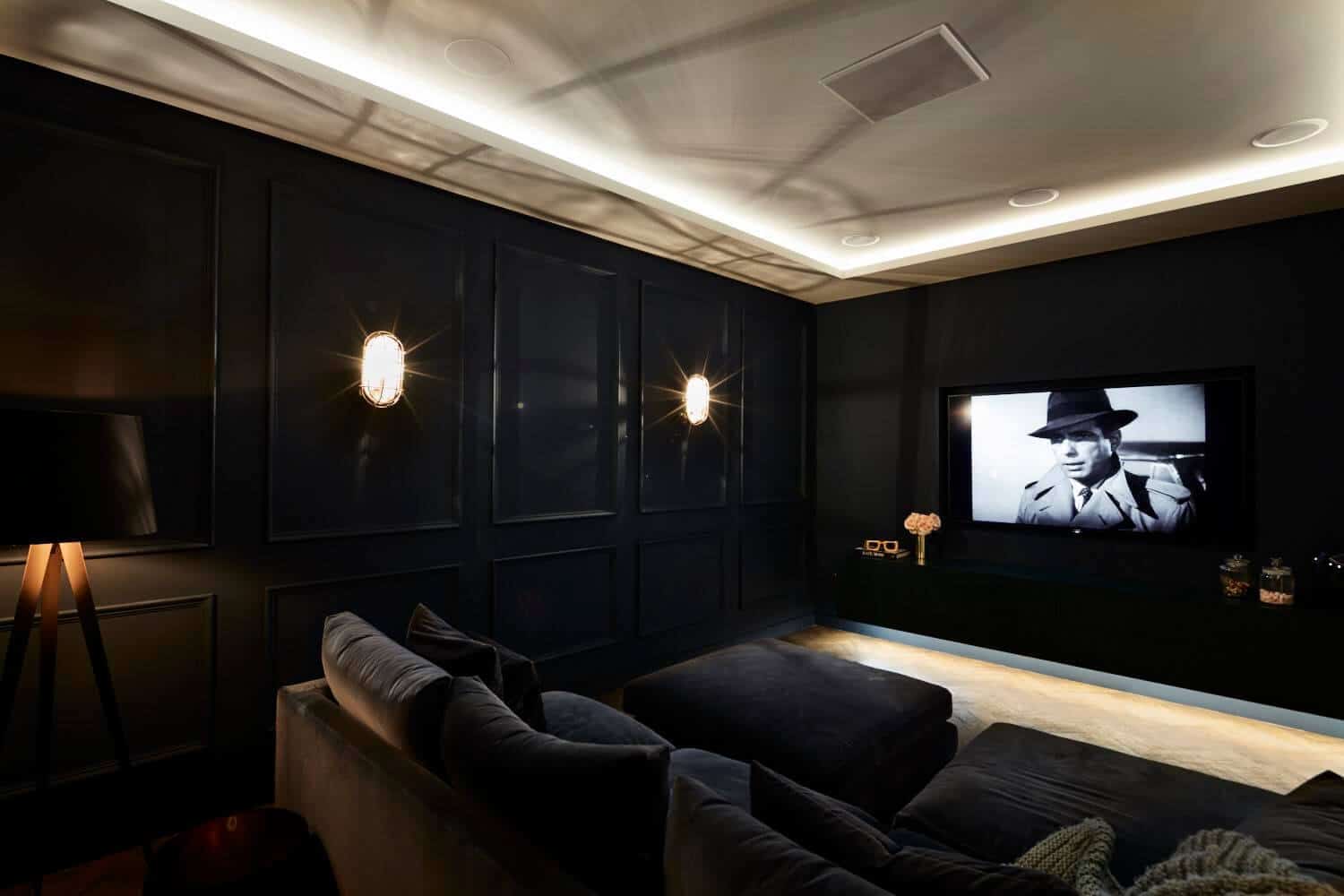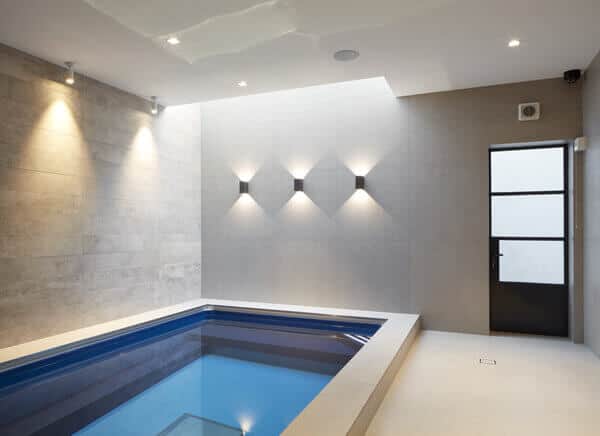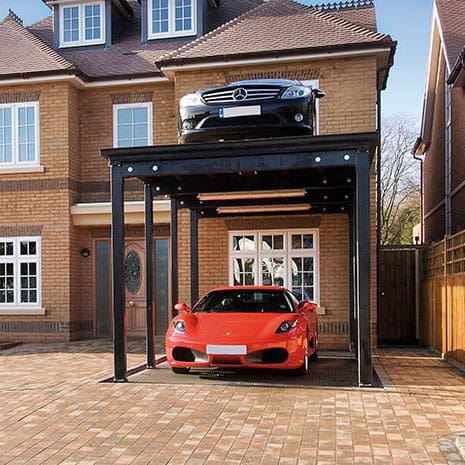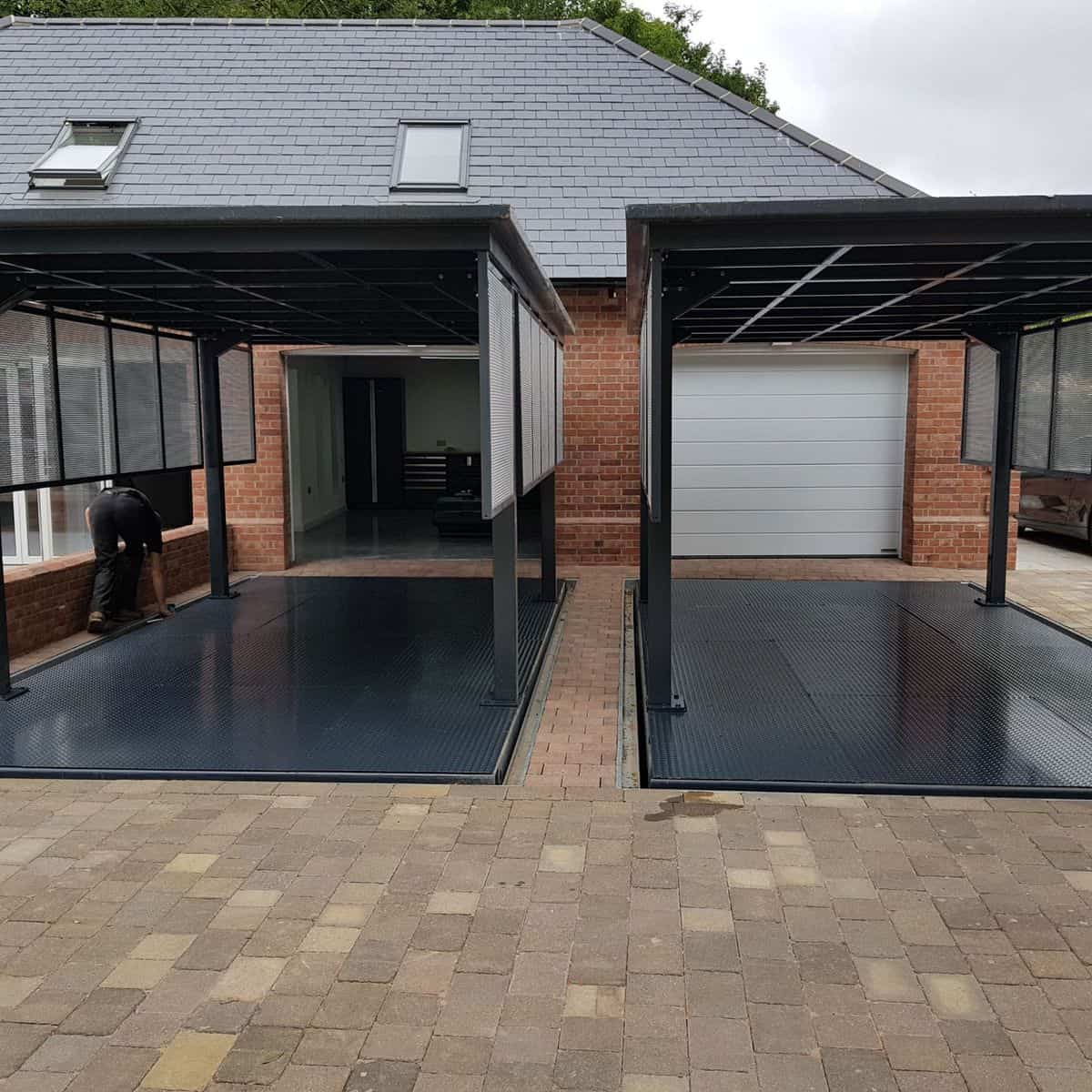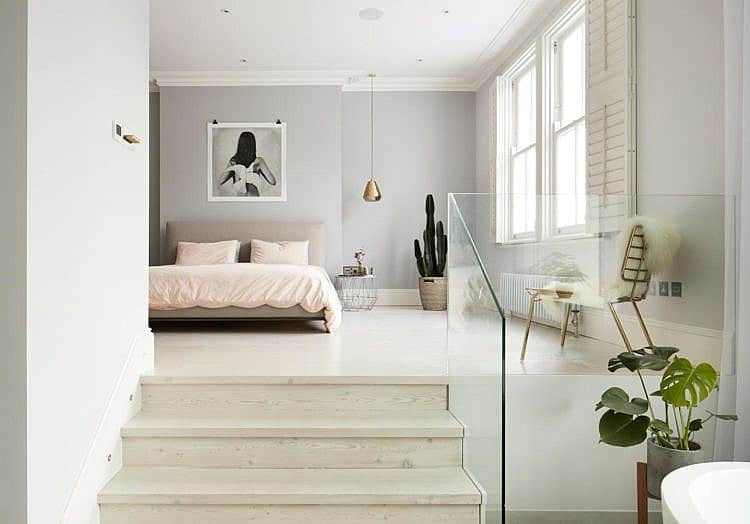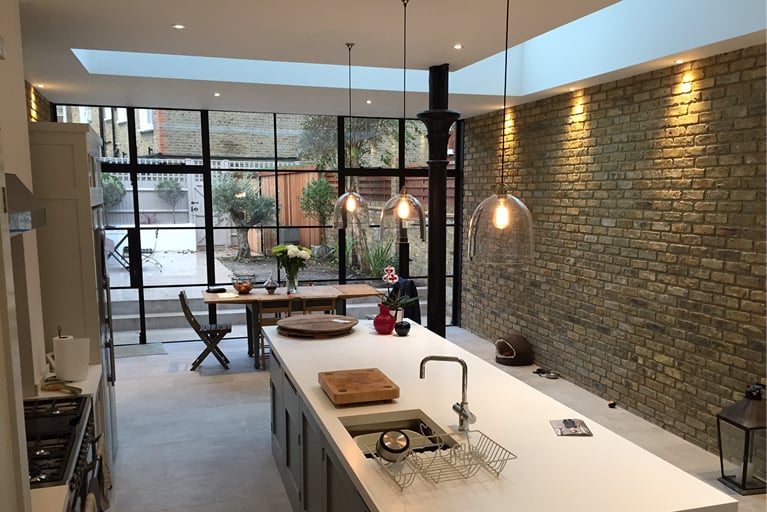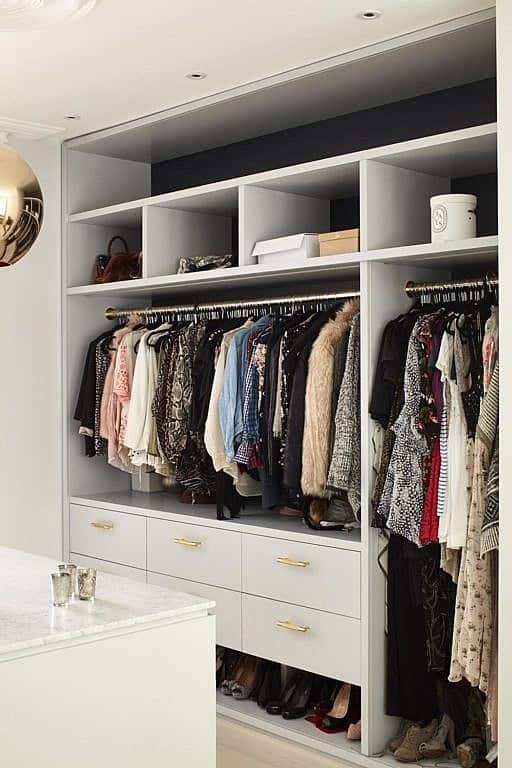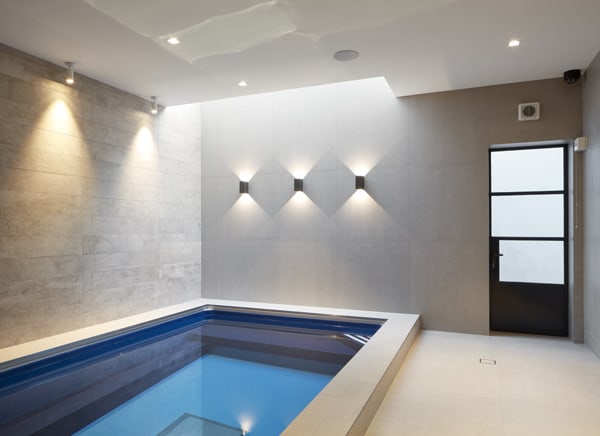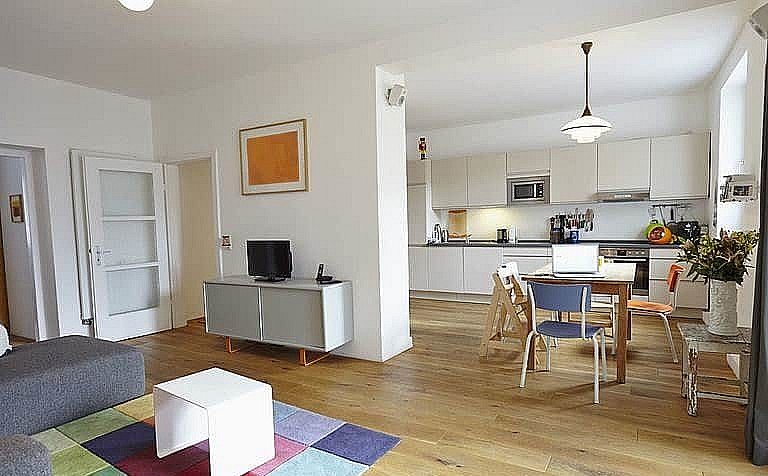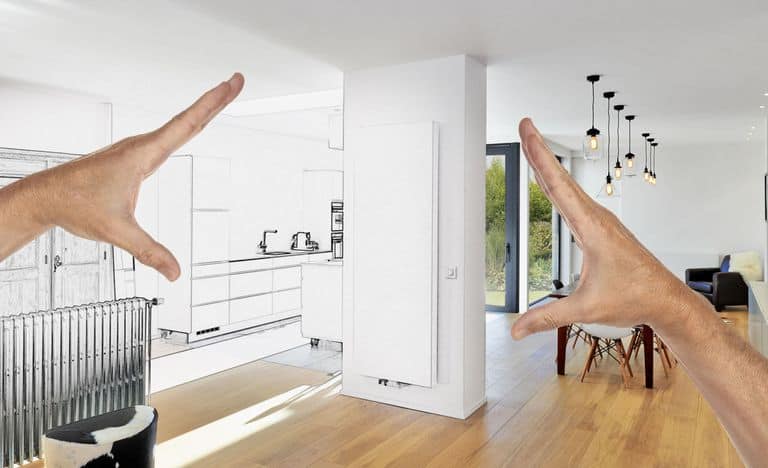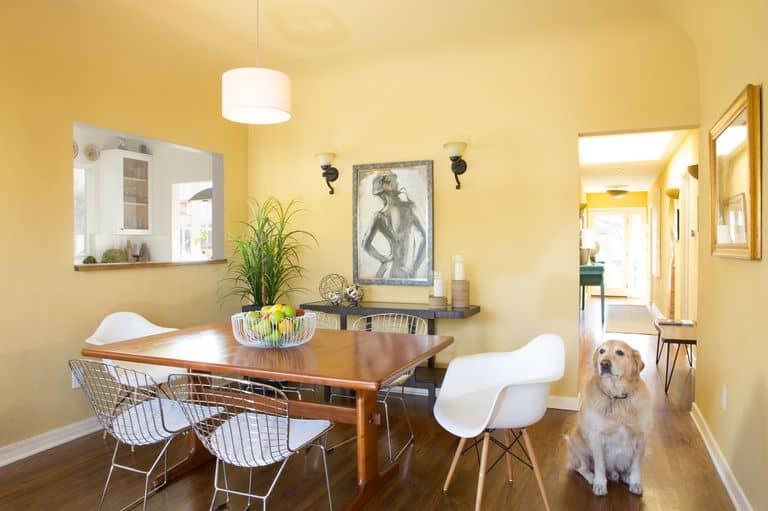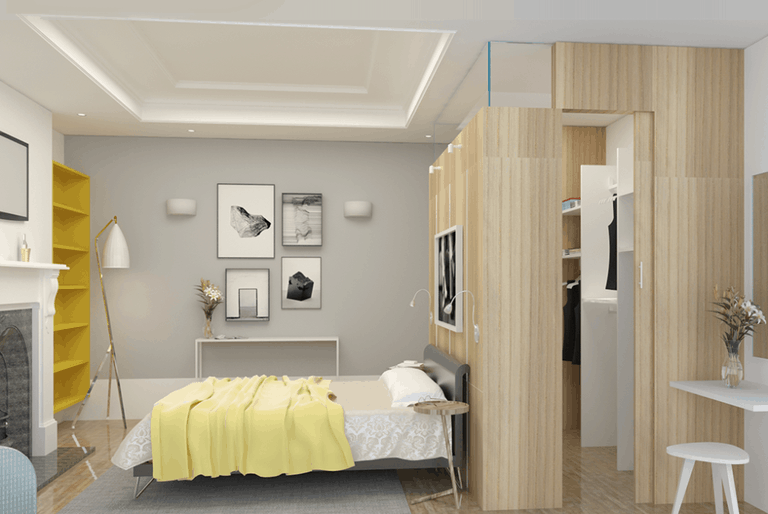 25 years experience
25 years experience  Restoration Experts
Restoration Experts  Award Winning
Award Winning  Basement Specialists
Basement Specialists Conversions
The title of this article is wrong. The words ‘budget’ and ‘Chelsea’ cannot be in the same sentence. If you are considering building a basement in the Chelsea or Kensington areas, we recommend that you forget the word ‘budget’ and instead channel words like ‘luxury’, ‘bespoke,’ ‘unique’ and ‘classy.’
Up until recently, the building of basements in London fell within Permitted Development and were an easy way to gain that extra space, albeit at a cost. However, in the last few years, in response to protests against so-called ‘iceberg’ basements (multi-storey basements), that has changed.
Today, you need to provide a full basement impact assessment before you submit your planning permission which involves going to the expense of instructing a structural engineer. Once planning is secured in principal, you have to seek party wall agreements–in itself this can be challenging especially if the property adjoins a house or building containing multiple flats as each of the owners needs to sign a party wall accord–and get building control involved. Planning permission for basements involves a large financial outlay which only the very serious will be prepared to undertake.
For information on submitting a planning application in the Royal Borough of Kensington & Chelsea, please visit the planning applications section on their website.
The specific Basement Planning Policy in the Royal Borough of Kensington and Chelsea, is available here and whilst it’s a very detailed document, it will give you a good idea of what you may and may not be able to pass through planning when submitting your basement planning application.
Creating living space in a basement is an evolving issue under the planning regime. Currently, converting an existing residential cellar or basement into a living space is in most cases unlikely to require planning permission if:-
1. A separate standalone unit is not created.
2. The usage of the basement is not significantly changed.
3. A light well is not added.
4. It does not affect the appearance of the property.
Any excavation in order to create a new basement will require planning permission. Any new basement with the following conditions will require Planning permission:
1. Basements involving major works.
2. Basements which create a new separate unit of accommodation.
3. Any basement design which alters the external appearance of your home. For example, the addition of a light well.
Basement Conversion in a Conservation Area: If you are planning a basement conversion or extension to your house in a conservation area, Planning Permission would be required prior to beginning any works. It is absolutely necessary to obtain the required conservation area consent prior to beginning any works. If you live on a ground floor flat and plan to convert your basement into a living space you must apply for planning permission.
The Kensington & Chelsea borough consists of several conservation areas – Conservation areas are sites of historical or architectural importance. Building and redevelopment can be a more complex process due to more planning regulations and constraints applying within such areas.
The streets in the Royal Borough of Kensington and Chelsea that are deemed part of a conservation area are:
Billings, Kensington Court, The Boltons, Kensington Palace, Brompton, Kensington Square, Brompton Cemetery, Ladbroke, Chelsea, Lexham Gardens, Chelsea Park/Carlyle, Nevern Square, Cheyne, Philbeach, Courtfield, Norland, Cornwall, Oxford Gardens, De Vere, Pembridge, Earls Court Square, Queen’s Gate, Earls Court Village, Royal Hospital, Edwardes Square/Scarsdale and Abingdon, Sloane Square, Hans Town, Sloane/Stanley, Holland Park, Thames, Kensal Green Cemetery, Thurloe Estate, Kensington, Smith’s Charity.
If you are a resident on one of these streets, you need to consider the costs of tailoring your basement build to fit the specific needs of the conservation area.
As a rule of thumb, basements cost between £200 and £300 per sq ft to build the box—where costs go from there depends entirely on you and what you have in mind.
Find out what factors will affect the cost of your basement conversion in a previous article on our website – “Find out how much your basement conversion will cost.”
If you are looking for a dream team to build your Chelsea basement and want the absolute best in quality and finish, do give us a call on 0208 191 7595. We are extremely knowledgeable and experienced with all the requirements, regulations and costs associated with basement excavation and construction in Chelsea and surrounding areas.
We’ll come around, discuss your needs and share some of our thoughts. If you prefer, you can email us at enquiries@sdabuildlondon.co.uk with your requirements and one of us will get in touch with you as soon as possible.
Read MoreAre you a car connoisseur or collector living in the Kensington and Chelsea borough? We’re sure that you, more than anyone else, know the cost and security risk of parking your stunning, collectible vintage or sports cars the streets of London. Have you considered installing a car park with an elevator in your basement? It’s the ultimate luxury feature that allows you to feel secure in the knowledge that your latest classic Aston Martin or Lamborghini is tucked away safely and that you can take it out for a spin by simply pressing a button.
In fact, not too long ago a Middle Eastern Royal, with a fleet of over 80 supercars paid £21 million for an underground car park in the glitzy Knightsbridge neighbourhood, not far away from luxury department store Harrods. (Independent, 9 Feb 2017).
According to an article in the Daily Mail, one of the latest luxury home improvement features in the Chelsea area has been the £50,000 Thunderbirds-style pop-up garage.
The garage uses a hydraulic platform which can be hidden under a water feature, flowerbed or patch of gravel – or even a second car.
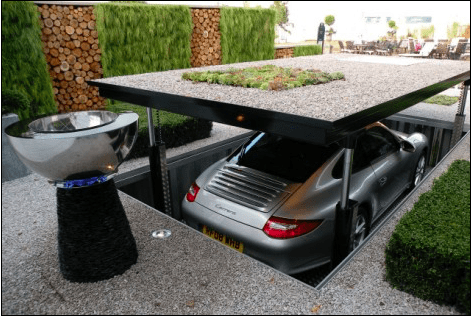
The modern Cardok lifts out of the ground at the touch of an electronic key fob.
Eight underground garages have already been built, four are in production and more than 10 are on order, with interest highest in Westminster, Kensington and Chelsea, Ealing, Dulwich and Highbury.
The hydraulic system allows urban homeowners to hide luxury cars beneath a normal-looking driveway – before summoning them to the surface at the touch of a button on a fob.
We thought we would answer some FAQ’s about car elevators that might be on your mind if you are considering installing one for your exclusive car collection.
- How much does a car elevator cost?
-
- According to Cardok, their standard parking solutions are available from £35,000 but a lot of projects, especially the made to measure ones, can go over a few hundred thousand pounds.
-
- How high of a ceiling do you need for a car elevator?
-
- Car lifts don’t fit very well in garages that are less than 22 feet deep. Ideally, the ceiling should be at least 11 to 12 feet high (though this author has used one – carefully – with a 9 1/2-foot ceiling).
-
- Do I need planning permission to install an underground car lift?
-
- Depending on the size and structure of the lift and/or a basement garage, you may need planning permission. We suggest you check with Kensington and Chelsea council once your plans have been drawn up.
-
- What are the types of car elevators available?
-
- Car Basement Lift
Designed for pit installation, this car lift consists of a self-supporting platform with its own roof cover allowing Parking of cars on the lift roof. It uses a scissor mechanism and comes with a ‘Person On Board’ option allowing the driver to remain in the vehicles while the lift is in motion. - Pop Up Smart Car Lift
Ideally designed to optimise parking space in residential homes where a standard above ground garage may have reduced dimensions, the lift will work using the homes standard electric supply and has a very sturdy 4 column structure ensuring perfect stability and easy installation. - Scissor Lift with Load Bearing Roof
This lift not only allows a second vehicle to be parked on the roof when closed, but can be raised and lowered while the second car remains in place. - Double Scissor Lift
Designed to store up to 3 cars, this double scissor mechanism lift allows 2 cars to be parked underground, leaving the driveway free for a third car to be parked.
- Car Basement Lift
-
- Who are some of the leading car elevator companies in the UK?
Some of the most well-known companies who manufacture and install car elevators are:-
- Cardok
- Total Lifting Solutions
- Parking Lift Solutions
- Sheridan Lifts
- If you are planning a complete home refurbishment that includes a car elevator, you will need this to be a part of your overall home design and plan. We believe you will need an experienced construction company like SDA Build to work with the car elevator company to design and build a system that works within the framework and structure of your current property or that will work in your newly refurbished property or new build.If you would like some advice on what we believe, given our experience in the Chelsea and Kensington areas, would be best suited for your home and lifestyle, give us a call on 0208 191 7595 or email us at enquiries@sdabuildlondon.co.uk. A member of our team will contact you and we’ll be happy to visit your property and discuss your options.”Luxury must be comfortable, otherwise it is not luxury.” Coco Chanel.
-
Some areas in London like Chelsea, Kensington, Knightsbridge and others are synonymous with luxury. Homes in these areas are assumed to be large and spacious, with high ceilings, full of character and with an air of decadence, old-world-ness and charm.
We have been working in these locations for the last 5 years and thought we’d share some of our experiences on what the current trends in home renovation and building are in these luxury areas in London.
1. Kitchens are the hub of the home
With entertainment being a big part of the lifestyle of these luxury homeowners, kitchens have now become the central focus of these homes. No longer is the cooking and prep of food confined to a space somewhere in back of the house. Cooking and socialising are now part of the overall entertainment so there is no expense spared when designing a kitchen. Kitchen companies today offer an “anything is possible” approach, so the sky is the limit. Some of the kitchens we’ve installed include amongst other features:
• Bespoke, hardwood cabinetry
• Bespoke marble worktops
• Splashbacks that are one-of-a-kind, made to order
• Sub Zero appliances
• Temperature controlled wine coolers in the kitchen island
• Luxurious larder
When it comes to luxury, these kitchens are it.
2. Walk-in wardrobes as big as your bedroom
Size does matter… that’s a fact. Many of these homes have walk-in wardrobes that are almost as big as their bedrooms. In fact, Christie’s Real Estate, reported that large closets continue to be a highly desirable amenity for luxury home buyers. Bespoke hardwood cupboards built to suit the homeowners personal need for storage of clothes, shoes, jewellery, handbags and other accessories, these wardrobes are straight out of The Great Gatsby.
3. A pet parlour
Our pets are as precious to us as our family members and in some cases more so. Why then, should they not have a room of their own? Some of our clients have requested us to build bespoke pet rooms, complete with underfloor heating, luxury dog beds, showers and overhead lamps to dry them after a muddy walk.
4. Upstairs laundry room
This may seem mundane, but how many people do you know with an upstairs laundry room? Considering the majority of our laundry is created upstairs, it makes sense to have your laundry upstairs too and save the bother of carrying laundry baskets up and down to the utility room. As well as space for washing machines and dryers, some of these homes have separate drying cupboards which not only dry clothes in record time, but they also emerge crinkle free.
5. Swimming pool in the basement
What could be more of a statement than a swimming pool in your basement? We recently built a basement in a home in Fulham, with a complete dig out for a swimming pool.; the perfect place to exercise first thing in the morning or invite friends over for a swim and a late afternoon barbecue.
6. Entertainment /Games room
A home cinema room and games room is what luxury is all about today. Equipped with state-of-the-art home entertainment systems, pool tables and kitted out with the latest technology, these spaces are second only to perhaps the luxury James Bond is used to – high tech, with music, radio, and TV audio streamed through with in-ceiling speakers from any smart device, including a built-in music server that can be linked to iTunes or Spotify.
With money being no object, these luxury constructions in London are built and fitted with the highest specs. Furniture is sourced from the most exclusive suppliers from across the world, tiles are made to order and designed especially for them and there is not a single item that does not have the ‘bespoke’ tag attached to it.
At SDA London team, we love such projects. It gives us the space and freedom to give our clients the very best that luxury can offer. We work closely with a team of professionals including architects, interior designers and suppliers alongside our clients to ensure that we give them the home they have dreamed of, leaving no stone unturned.
Our motto for these homes is “If you want it, we will make it happen.”
If you are looking for a team to build your dream home and want the absolute best in quality and finish, do give us a call on 0208 191 7595. We’ll come around, discuss your needs and share some of our thoughts. If you prefer, you can email us at enquiries@sdabuildlondon.co.uk with your requirements and a member of our team will get in touch with you as soon as possible.
Read MoreOver the years, the SDA Build London team has worked with several talented architects and interior designers and we’ve picked up some helpful tips when planning your room layout and space. A close working relationship with these professionals is essential to give our clients their dream home. They visualise and plan in consultation with the client; SDA Build London implements their vision. This article in House Beautiful hits the nail on the head with 8 room layout mistakes to avoid. We thought it might be useful to you if you are in the process of refurbishing or building a new home.
Whether you’ve moved into a new house or undergoing a renovation, effectively planning the layout of your home will save you a lot of time and money. There are many factors to consider, but measurements are key, as is the size of your actual furniture and whether the layout will work for your lifestyle.
Mismatching your floor plan and lifestyle
Your lifestyle is the single biggest factor that should influence the layout of your new home. For example, if you host guests regularly – don’t position the guest toilet on a different floor or in the family bathroom. If you have outside space, make sure it is easily accessible from the living area and not through a private space, like a bedroom, utility room or home office.
Form vs Function
A plan might look perfect on paper, but mistakes can become apparent only after you move in. For example, placing your kitchen too far from the front or side entrance means that you will have to carry heavy groceries a long way through the house. To make sure your layout functions well, try to imagine yourself going about your daily routines in your new space, highlighting any potential functional challenges.
Not considering how to use your space
Even if your layout is functional, not paying enough attention to the way you use the space can lead to a negative experience. For example, placing the walkway from your living room to the kitchen between the sofa and the TV will create an eye-line obstacle when you’re watching programmes.
Poor space allocation
Even in a larger home, a few centimetres wasted in one area can make a significant difference elsewhere. Corridors are a good example of that. Though they may be attractive as well as a necessity, both for functional reasons and for fire safety, you should keep them to a minimum. The space you save will become very useful in your living room or bedroom.
Neglecting to create enough storage
Forgetting to include not only the right amount of storage but also the right type of storage is a common and often costly mistake. No architect or planner knows what you need to store better than you do, and the type of storage varies by lifestyle. You may need to store bicycles by the entrance or kids’ toys in the living room, so being involved in the storage planning process is essential. Adequate storage is priceless, it will help you avoid clutter, meaning a more organised, safer and calm space.
Treating furniture as an after-thought
Finding the right place or position for your furniture can become a challenge, even in larger spaces. Finding the right furnishing layout is especially difficult when creating an open plan environment. Remember that with less walls there is also less wall space against which to place furniture and hang artwork. To avoid frustrating and expensive mistakes, create a layout drawing with scaled furniture drawn onto it early on in the design process.
Planning as you go
A harmonious layout requires careful, up-front planning. Each space is unique and there are nuances that typically only a trained eye can identify, and clever tricks only a professional can suggest. Getting your builder in before you know exactly what you want is a recipe for disaster, and you risk going over budget which is all too common. If you feel confused or intimidated by hiring an architect, or if you are looking to save on architect fees – there are other alternatives. Try getting advice from a cheaper floor plan expert online.
Being insensitive to existing infrastructure
Most of your infrastructure, like structural walls, drainage pipes and chimney support walls is hidden. Though it may seem easy to move things around, the cost of repositioning your bathroom to the opposite side, away from the drain may be expensive and may cause problems in the future. Work with your environment wherever possible to avoid spending too much time and money on layout changes where they are not entirely necessary.
If you are considering a property refurb or a house build and believe in doing your best to create a home that is harmonious with the environment, do give us a call on 0208 191 7595. Or better still, book a FREE consultation with us via our website and we’ll visit your property, discuss your ideas and share some of our recommendations with no obligation:)
Read MoreBasement conversions in Chelsea and Kensington are in demand as space constraints prevent rear or side extensions. Not only do they add valuable floor space to your property and increase the value of the property, but are extremely versatile and can be used for several purposes, including cinema rooms, gyms and kitchens.
If your property is in an area where a basement conversion is a viable option, or you are planning a complete property demolition and rebuild, a basement can give you that special, additional “nice to have” space for your hobbies, home business, art collection, wine cellar or children’s den. We recently converted a basement in Chelsea into a yoga studio as property owner had recently qualified as a yoga instructor and wanted a space to build her yoga business.
Whatever the purpose, it’s important to work closely with the architect and interior designer when a space is being built with a specific function. It’s also a good idea to plan the use of the space at the outset so that the construction and design are tailored to the room’s requirements.
The Chelsea yoga studio we built had some specific requirements which we thought we’d share, in case you are thinking of building one in your own home.
As the yoga room was being built in the basement, one of the most important considerations was waterproofing or tanking. Of course, this is the case when building any basement. SDA Build London is proudly accredited by the UK’s leading waterproofing brand, Delta, with all our basement conversion projects installing their cutting-edge Delta Membrane Systems.
A yoga room needs to be warm and welcoming. Our clients wanted a clean look with uniform heating throughout. We recommended the installation of underfloor heating across the room allowing for even heat distribution and a feeling of warmth when stepping onto the floor.
Flipping to coin, we also installed a ducted air-conditioning system for the warmer months, allowing for air circulation and temperature control.
Wooden flooring was used in the room for a feeling of warmth.
Another important feature was the lighting. We installed dimmer switches on overhead lights for total control of the lighting levels to suit the mood of the room.
Walls were painted in calming, soothing colours such as muted, cooler tones and warm whites. The idea is to provide a sense of calm and peace.
We installed full length mirrors across the width of one wall so that the yoga students could check posture and alignment. As this room was in the basement, and did not have a view to the outside, the combination of lighting and mirrors gave it a sense of space and light.
We built cupboards at the far end of the room for storage of yoga mats and other equipment.
When building a space, it is important to consider the ultimate use of the room. In most cases, the purpose of the room will be the determining factor in several elements such as lighting, electrics, plumbing, heating, colour and flooring.
If you are thinking about building a yoga room in your home or basement or for that matter converting your basement into a habitable space, do give us a call on 0208 191 7595 or book a Free Property Refurbishment Consultation via our website. We will visit your property, discuss your ideas and needs and share some our thoughts and recommendations on we can do for you. This is a no obligation visit, so please don’t feel like you will be tied in to us if you call us outJ
Read More

